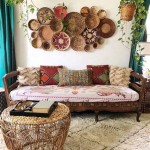Decorating With A Dark Gray Couch: A Comprehensive Guide
A dark gray couch is a versatile and sophisticated centerpiece for any living space. Its neutral tone serves as a blank canvas, allowing for a wide range of decorating possibilities. However, maximizing its potential and creating a harmonious interior requires careful consideration of various design elements, including color palettes, textures, lighting, and accessories.
The inherent appeal of a dark gray couch lies in its ability to anchor a room, providing a sense of stability and grounding. Its depth can create a cozy and intimate atmosphere, especially when paired with the right accents. This article explores key strategies for decorating effectively with a dark gray couch, ensuring a stylish and balanced living environment.
Understanding the Undertones of Your Dark Gray Couch
Not all dark gray couches are created equal. Subtle variations in undertones can significantly impact the overall aesthetic and influence the choice of complementary colors and textures. Determining the undertones of the gray fabric is therefore crucial for achieving a cohesive design.
Dark gray can lean towards cool undertones, exhibiting hints of blue or green. Alternatively, it can possess warm undertones, displaying subtle hints of brown or beige. To identify the undertones, compare the couch fabric to pure gray swatches or neutral color cards. Observe how the surrounding lighting affects the perceived color. Natural light will often reveal the undertones more clearly than artificial light.
Once the undertones are identified, select colors and textures that complement them. For a cool-toned dark gray couch, consider pairing it with cool-toned blues, greens, purples, and silvers. Conversely, a warm-toned dark gray couch will harmonize well with warm-toned browns, oranges, yellows, and golds. Neutral colors like white, cream, and beige can work with both cool and warm undertones, providing a balanced foundation.
Ignoring the undertones can lead to clashing colors and an unbalanced aesthetic. For example, pairing a cool-toned dark gray couch with predominantly warm-toned accessories may create a dissonant effect. Paying close attention to these subtle nuances is key to creating a visually appealing and harmonious living space.
Selecting a Complementary Color Palette
The color palette plays a pivotal role in shaping the overall mood and style of a room. When decorating with a dark gray couch, the choice of colors should enhance its inherent qualities and create a balanced and visually appealing composition.
Monochromatic palettes, featuring varying shades of gray, can create a sophisticated and understated look. Light gray walls, silver accents, and white trim can provide a subtle contrast against the dark gray couch, creating a sense of depth and dimension. This approach is particularly effective in minimalist or contemporary settings.
Analogous color palettes, employing colors that are adjacent to each other on the color wheel, can create a harmonious and visually calming environment. Pairing a dark gray couch with blues and greens, for instance, evokes a sense of tranquility and serenity. Similarly, combining it with browns and oranges can create a warm and inviting atmosphere.
Complementary color palettes, utilizing colors that are opposite each other on the color wheel, introduce a bolder and more dynamic contrast. Pairing a dark gray couch with yellow or orange accents can create a visually striking and energetic space. However, it's crucial to use complementary colors sparingly, as excessive contrast can overwhelm the senses.
Neutral color palettes, centered around whites, creams, beiges, and light grays, provide a versatile backdrop that allows the dark gray couch to take center stage. These palettes are particularly well-suited for smaller spaces, as they create a sense of openness and airiness. Pops of color can be introduced through accessories such as throw pillows, blankets, and artwork.
When selecting a color palette, consider the existing architectural features of the room, such as the wall color, flooring, and trim. It's also important to factor in the amount of natural light that the room receives. Darker colors can absorb light, making a small or poorly lit room feel even smaller and darker. In such cases, lighter and brighter colors are preferable.
Incorporating Textures and Patterns for Visual Interest
While color is essential, the inclusion of varied textures and patterns is critical for adding depth, dimension, and visual interest to a space featuring a dark gray couch. Texture refers to the tactile quality of a surface, while pattern involves a repeating design or motif.
Textural contrast can be achieved by incorporating a variety of materials, such as velvet, linen, wool, leather, and wood. For example, pairing a smooth velvet dark gray couch with a woven wool throw and leather accent pillows creates a luxurious and inviting feel. A rough-hewn wooden coffee table can provide a grounding contrast to the sleek lines of the couch.
Patterns can be introduced through a range of elements, including throw pillows, rugs, curtains, and artwork. Geometric patterns, such as stripes, chevrons, and hexagons, can add a modern and dynamic touch. Floral patterns can soften the overall aesthetic and introduce a touch of femininity. Abstract patterns can create a sense of intrigue and artistic flair.
When incorporating patterns, it's important to maintain a sense of balance and avoid overwhelming the space. A general rule of thumb is to mix patterns of different scales, such as a large-scale floral pattern with a small-scale geometric pattern. Also, consider the color palette of the patterns and ensure that they complement the overall color scheme of the room.
In addition to fabrics, textures can also be introduced through architectural elements, such as textured walls, exposed brick, or reclaimed wood. These elements can add character and depth to the space, creating a unique and personalized atmosphere.
Carefully considering the interplay of textures and patterns can transform a room from bland to captivating. By thoughtfully selecting these elements, a harmonious and visually stimulating living space can be achieved.
Optimizing Lighting to Enhance the Ambiance
Lighting plays a crucial role in shaping the mood and atmosphere of a room, and it is particularly important when decorating with a dark gray couch. Dark colors can absorb light, making a space feel smaller and darker. Therefore, it's essential to optimize the lighting to create a balanced and inviting environment.
Natural light is the most desirable form of lighting, as it provides a warm and natural glow. Maximize natural light by keeping windows unobstructed and utilizing sheer curtains or blinds that allow light to filter through. Mirrors can also be strategically placed to reflect natural light and brighten the space.
Artificial lighting should complement natural light and provide adequate illumination throughout the day and evening. Consider a combination of ambient, task, and accent lighting to create a well-lit and versatile space.
Ambient lighting provides general illumination for the entire room. This can be achieved through ceiling fixtures, chandeliers, or recessed lighting. Dimmers allow for adjusting the ambient lighting to create different moods and atmospheres.
Task lighting provides focused illumination for specific activities, such as reading or working. Table lamps, floor lamps, and desk lamps are examples of task lighting. Place task lighting strategically near seating areas or work surfaces.
Accent lighting highlights specific features of the room, such as artwork or architectural details. Track lighting, spotlights, and picture lights are examples of accent lighting. Use accent lighting to draw attention to focal points and add visual interest.
When selecting light bulbs, consider the color temperature. Warm white light bulbs (2700-3000K) create a cozy and inviting atmosphere, while cool white light bulbs (4000-5000K) provide a brighter and more energizing light. Choose light bulbs that complement the overall color palette of the room and the undertones of the dark gray couch.
Layered lighting is key to creating a well-lit and visually appealing space. By combining natural light with a mix of ambient, task, and accent lighting, a balanced and versatile environment can be achieved.
Selecting and Arranging Accessories to Complete the Look
Accessories are the finishing touches that personalize a space and bring it to life. When decorating with a dark gray couch, carefully selecting and arranging accessories can enhance the overall aesthetic and create a cohesive and inviting environment.
Throw pillows are a versatile and affordable way to add color, texture, and pattern to a dark gray couch. Choose throw pillows in a variety of sizes, shapes, and materials to create visual interest. Experiment with different color combinations and patterns to complement the overall color scheme of the room. Consider adding pillows with different textures, such as velvet, linen, or faux fur.
Throw blankets add warmth and comfort to a living space. Drape a throw blanket casually over the arm of the couch or fold it neatly on the back of the couch. Choose a throw blanket in a color and texture that complements the overall aesthetic of the room. Consider adding a throw blanket with a fun pattern or a soft and luxurious material.
Rugs define the seating area and add warmth and texture to the floor. Choose a rug that is large enough to anchor the entire seating area, with the front legs of the couch and chairs resting on the rug. Consider the color, pattern, and texture of the rug and ensure that it complements the dark gray couch and the overall color scheme of the room.
Artwork adds personality and visual interest to a space. Choose artwork that reflects individual taste and style. Consider the size, color, and style of the artwork and ensure that it complements the overall aesthetic of the room. Arrange artwork in a gallery wall or hang a single statement piece above the couch.
Plants add life and freshness to a living space. Choose plants that thrive in the available light conditions. Consider the size, shape, and color of the plants and ensure that they complement the overall aesthetic of the room. Place plants on side tables, shelves, or in decorative planters on the floor.
Coffee tables provide a surface for drinks, snacks, and accessories. Choose a coffee table that is the appropriate size and shape for the seating area. Consider the material, color, and style of the coffee table and ensure that it complements the dark gray couch and the overall aesthetic of the room. Style the coffee table with books, candles, and other decorative objects.
Well-chosen and thoughtfully arranged accessories can transform a living space from ordinary to extraordinary. By carefully selecting these elements, a personalized and inviting environment can be created around a dark gray couch.

150 Best Dark Grey Sofa Living Room Ideas Decor Designs

15 Best Dark Gray Sofas For A Cozy Living Room

29 Dark Grey Couch Living Room Ideas For A Timeless Aesthetic Learn

Grey Couch Living Room Ideas Modern Interior Design Home Décor Inspiration Decoholic

Charcoal Gray Sofa Design Ideas

4 Ways To Decorate Around Your Charcoal Sofa Maria Killam

20 Grey Couch Living Room Ideas For A Neutral Timeless Appearance Coco Lapine Designcoco Design

34 Stylish Dark Grey Couch Living Room Ideas

15 Ways To Style A Grey Sofa In Your Home Décor Aid

4 Ways To Decorate Around Your Charcoal Sofa Maria Killam
Related Posts







